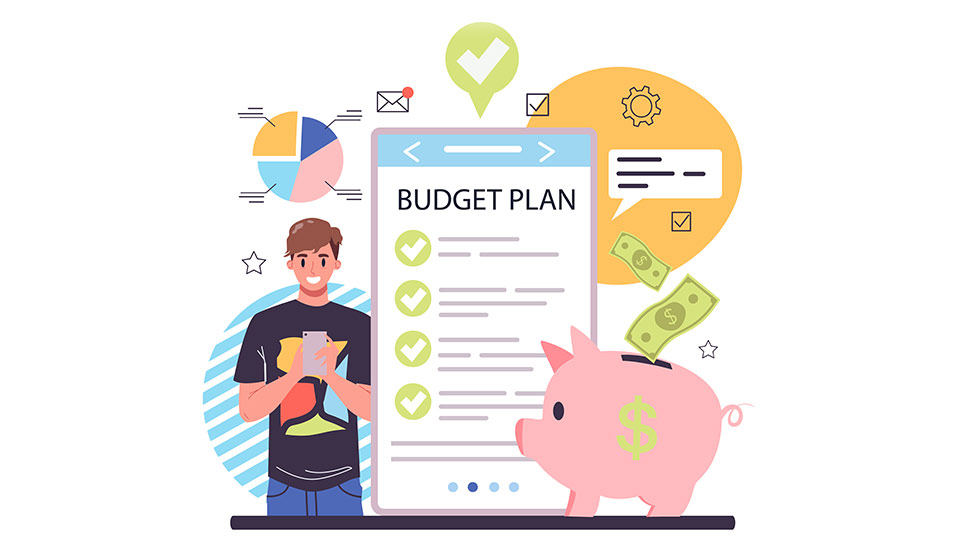Blog
How to Start Budgeting on a Tight Income: A Step-by-Step Guide

Starting a budget on a tight income can feel like an uphill battle, but it’s not only possible—it’s empowering. With careful planning, prioritization, and discipline, you can take control of your finances, stretch your dollars, and even find room for savings. Whether you’re trying to reduce debt, manage your living expenses, or simply make your money last until the next paycheck, a budget can help bring structure to your spending.
Here’s a comprehensive guide to get you started on budgeting, even if your income feels limited.
Step 1: Track Every Dollar
Before you can create a budget, you need to understand where your money is going. Start by tracking every single dollar you earn and spend. For at least one month, record every purchase and every bill. There are plenty of tools and apps to help with this (like Mint or You Need A Budget), or you can keep it simple with a notebook or spreadsheet.
Why is tracking important? It gives you a clear view of your spending habits, helps you identify waste, and reveals areas where you might be able to cut back. You may be surprised to see how small expenses, like daily coffee runs or subscription services, can add up over time.
Step 2: Prioritize Your Essentials
When your income is tight, it’s important to focus on your essentials first—the must-haves that keep you secure and stable. These are non-negotiable expenses like:
- Rent or mortgage payments
- Groceries and basic household supplies
- Utilities (water, electricity, gas, internet, etc.)
- Transportation (gas, public transit, etc.)
- Insurance premiums
- Debt repayments (like student loans or credit cards)
Once these expenses are covered, you’ll know how much is left for discretionary spending and savings.
Step 3: Allocate "Fun Money" (Wisely!)
After paying for essentials, whatever remains is your discretionary money—often referred to as "fun money." This is where you get to enjoy yourself, but be careful! On a tight income, it's easy to overspend on wants rather than needs. Here’s how to manage this:
- Set limits: Decide on a specific amount you can afford to spend on non-essential items like entertainment, dining out, or shopping.
- Prioritize experiences: Instead of splurging on impulse buys, focus on meaningful experiences that fit within your budget.
- Plan for bigger purchases: If there’s something you really want that’s beyond your current budget, start saving for it little by little, instead of charging it to a credit card or taking on more debt.
Step 4: Build a Safety Net
Even if your income is tight, setting aside something for savings is critical. Life is unpredictable, and having a financial cushion can save you from spiraling into debt when an emergency hits. Start with small goals:
- Emergency fund: Aim to set aside at least $500–$1,000 to cover unexpected expenses like car repairs or medical bills.
- Savings goals: After establishing an emergency fund, set up additional savings for future goals, like a vacation or a down payment on a home.
Automating your savings, even if it’s just $5 or $10 per week, helps you build that safety net over time.
Step 5: Review and Adjust Regularly
A budget isn’t something you set once and forget. It’s a living, breathing plan that requires regular attention and adjustments. Life circumstances, unexpected expenses, or changes in income can impact your budget, so it’s important to review it regularly (monthly or weekly) to ensure you stay on track.
- Look for opportunities to cut costs: Regularly reviewing your budget can help you spot areas where you might be overspending or find opportunities to save. For example, switching to a cheaper phone plan, negotiating your rent, or cutting down on impulse buys can make a big difference.
- Plan for irregular expenses: Some expenses only come up a few times a year (like car insurance or holidays), so planning ahead will keep them from derailing your budget.
Step 6: Embrace Consistency and Discipline
The key to success when budgeting on a tight income is consistency. While you might not see major changes immediately, sticking to your budget will eventually help you gain more control over your money.
- Be disciplined: Avoid impulse purchases and think carefully before spending on non-essentials. Delayed gratification can lead to better financial health in the long run.
- Celebrate small wins: Every dollar saved or smart financial choice made is a victory. Celebrate those small wins to stay motivated.
Additional Tips for Stretching Your Budget
- Look for side income opportunities: If possible, explore part-time jobs, freelance work, or passive income streams like selling unwanted items or investing.
- Buy in bulk or shop sales: Stocking up on non-perishable goods during sales can help reduce your grocery bills over time.
- Use cash-back apps and coupons: Taking advantage of cash-back apps, reward programs, or coupons can help you save on everyday purchases.
Budgeting on a Tight Income is Possible
While it might feel daunting at first, budgeting on a tight income is all about making informed decisions, prioritizing your needs, and being consistent with your spending habits. With patience and discipline, you’ll gain more control over your finances, reduce financial stress, and may even find room to grow your savings over time.
Remember, budgeting is a journey, not a destination, and even small steps forward can make a big difference in achieving your financial goals.